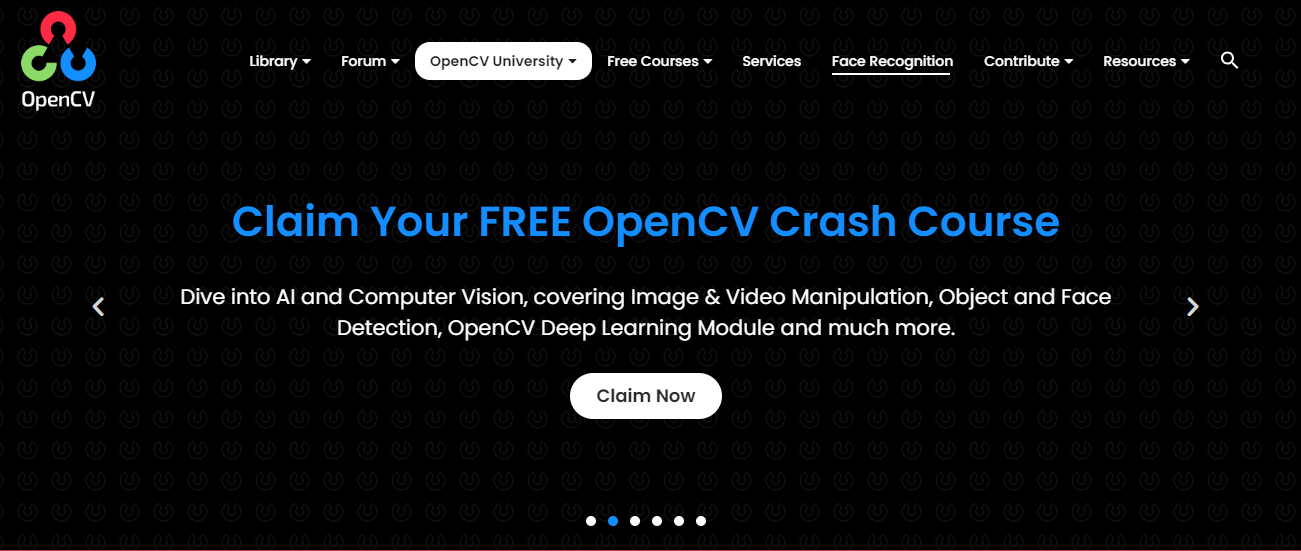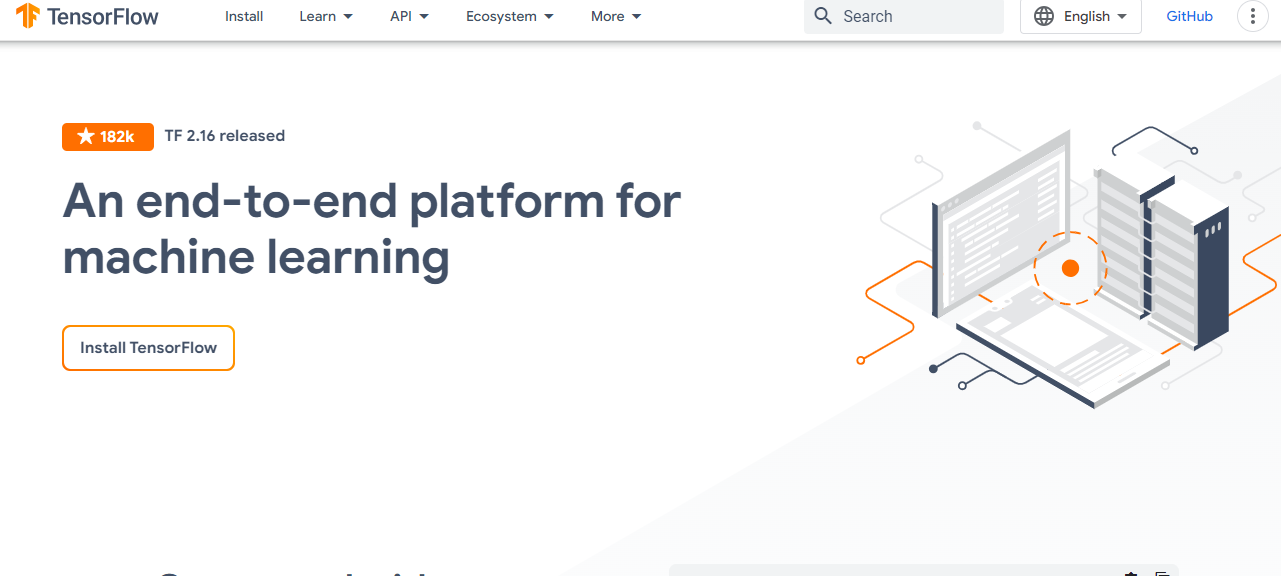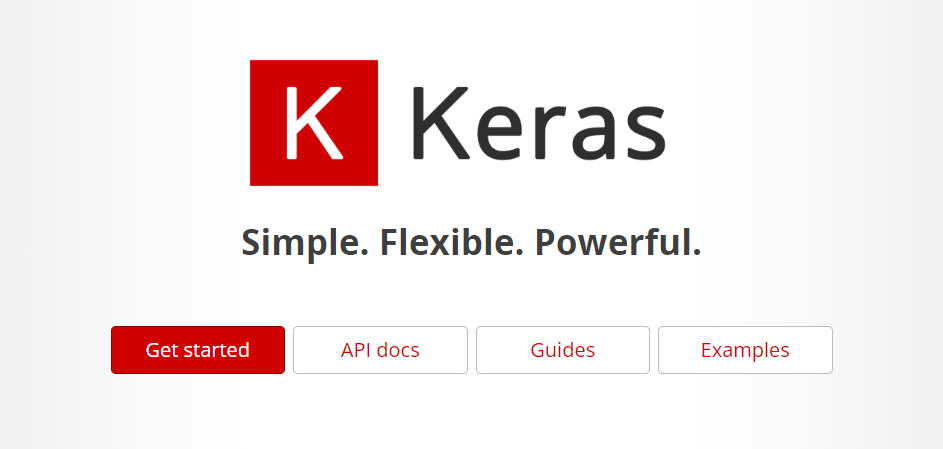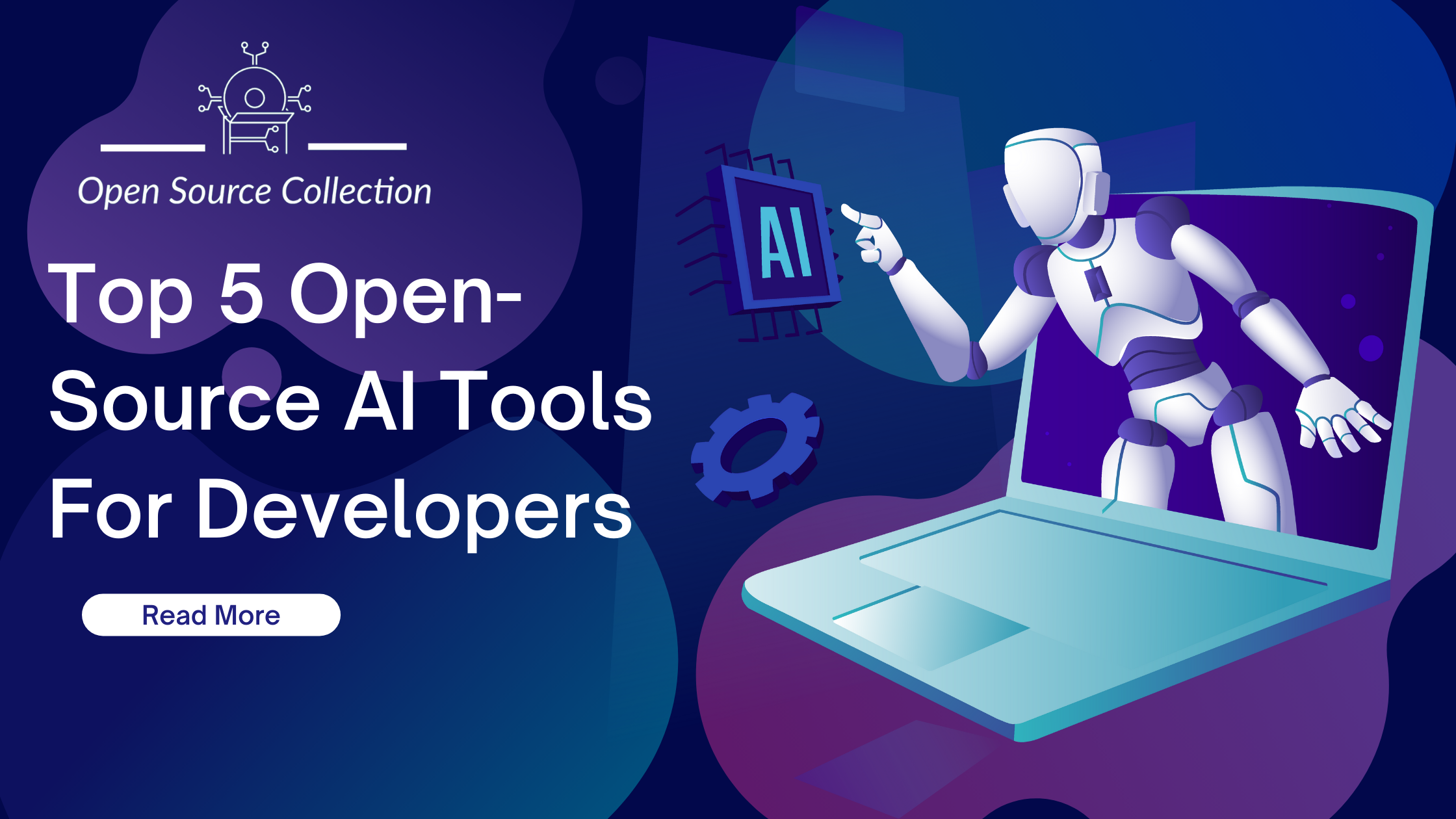Wondering are there any Top 5 open-source AI tools for developers? Well, of course, there are many! Open-source artificial intelligence (AI) means AI technology where anyone can freely use, change, and share the code. This openness encourages people to experiment and create new AI applications. When AI algorithms, models, and data are accessible to everyone, it sparks innovation as people collaborate and build on each other's work. This often leads to the development of effective AI solutions for different problems.
These open-source AI projects are available for free on platforms like Open source collection or GitHub. They are used in various industries like healthcare, finance, and education to fuel innovation. By providing ready-made frameworks and tools, these projects save time for developers. They can focus on making customized solutions to fit specific needs. With these tools, even small teams can create useful applications for different operating systems like Windows, Linux, iOS, and Android.
Here in this article, we are going to discuss the Top 5 open-source AI tools for developers, So let’s what these tools are and how they are making developers' life easier!
Open-source AI's Transformative Power
Despite the risks, open-source AI continues to grow in popularity. An increasing number of developers have already selected open-source artificial intelligence (AI) frameworks to implement over the closed and proprietary ones. According to the latest survey, 80 percent of the respondents said that they are incorporating more open-source software into their projects compared to last year. As many as 41 percent of them reported a large rise in the use of open-source software.
As open-source AI is used more extensively by developers and researchers given the large investments by big technology companies, organizations will reap the major rewards from these transformative AI technologies.
In healthcare, organizations like Merative (formerly known as IBM Watson Health) are utilizing TensorFlow in image analysis to enhance the diagnostic process and consequently arrive at personalized medicine. J.P. Morgan’s Athena uses open-source AI which is based on Python because it has a rich development community to go first at its risk management modification. Amazon leverages open-source AI to improve its recommendation systems, control supply chain operations, and expand the operations of its AI assistant Alexa.
These open source platforms educate through Coursera and edX that apply AI in education, personalize the learning experience, suggest adaptive computers according to student's level, and automate grading systems. Moreover, you can still discover different open-source AI automateds such as those from Netflix and Spotify that operate together with the company's solutions. They use well-known machine learning libraries such as TensorFlow and PyTorch to get better recommendations and improve overall the system.
Also read: What Are Open Source Projects?
Top 5 Open-Source AI Tools That You Should Know
The following open-source AI frameworks not only provide tools but also encourage innovation, teamwork, and learning in different fields. They empower users of all levels, from beginners to experts, to explore the vast possibilities of AI.
OpenCV

OpenCV can be simply imagined as a big toolbox for computers to visually perceive and comprehend the environment they are in. It contains all kinds of functionality that computers use to identify objects, follow movement, and, amazingly, decipher emotion from pictures or videos. And the best part? That is free to use!
What makes OpenCV awesome is the fact that it is light fast and can handle real-time applications. Furthermore, many people use OpenCV for their projects and share their ideas. The best thing is that it can run on all computers no matter the kind of system you're running on. OpenCV will automatically handle it for you.
Big companies, small start-ups, and everyone in between use OpenCV for its versatility. OpenCV whether you automating the process, visual data analysis, or something new is engaging. Also, the OpenCV grows versatile as your needs grow, this demonstrates the flexibility and availability of services to any organization.
TensorFlow

TensorFlow is a toolkit for computer intelligent learning. The technology is flexible and compatible with various computer languages, like Python and Javascript. With TensorFlow, there are opportunities to train the learning applications on not only many computers but also different gadgets.
It has gained popularity for the simple reason that many people use it and share their tips, and already many workable programs and useful tools are being created. This enables both novice and experienced AI coders to quickly build and run new things in the artificial intelligence environment.
Pytorch

Pytorch is the AI toolbox that is easily available and as it is open source. It has features that simplify the model-building process for general and specific tasks. Thanks to PyTorch's capabilities, it is easy to spot and solve pitfalls in the models as well as the full control over how they are built by you.
It runs easily with Python, a staple programming language, and can take full advantage of GPUs, and powerful graphics processors, which accelerate the training of models faster. In other words, one can be quite expedient in the matter of trying any new ideas and experiments. PyTorch is a preferred tool for researchers and developers when they are keen to architect AI models that are fast and do deep learning research efficiently.
Keras

Keras acts as a friendly assistant and uses neural networks, which are a type of artificial intelligence. It's free and it doesn't require a license, code is open-source, anyone can use it, and it's written in Python, a common language for programming.
The fact that Keras is so easy to use and provides many options to quickly check model performance for deep learning is one of the things that makes it great. It's intuitive for beginners, but it is sophisticated for professionals who like to have their models a bit rougher around the edges. The above are the selling features that make it a leading choice for both those interested in learning about AI and also for those working on producing deep learning solutions to tough problems.
Similar to this: Top 10 Open Source Technologies and Why You Should Learn Them
Scikit-learn

Scikit-learn is like a special box of tools for machine learning and predicting things based on the data we have, and the best part we can get it without paying any money. It's supposed to operate with Python a widely used language. This is how well-known firms such as J.P. Morgan and Spotify use it to make the AI algorithms that they employ more intelligent. The cool thing about the Scikit-learn is that it has quite a few supervised learning algorithms available for you to choose from depending on whether you want to teach the machine to recognize patterns or predict future outcomes.
It is very convenient - just set it up and you can use the parts of it for other projects as well. In addition, the community is huge, so while working or brainstorming, on the other hand, there will always be someone who will lend you a hand if you get stuck. Hence, it is an ideal tool for getting you closer to and making sense of the data you might be working with, regardless of the task at hand.
Final Thoughts- The Future Of Open-Source AI
You must be thinking, Does open-source software have a future? Well, The future of open-source AI is bringing major changes to the growth and change of big business. With the increasing adoption of this technology across different industries, companies begin to discover and innovate new applications. Here are the major expected outcomes as AI adopts the open-source concept. New tools and technology such as Hugging Face Transformers and OpenCV help in developing smarter AI. Therefore, we are now able to do more things with it, such as developing more efficient chatbots, recognizing more accurate images, and even creating robots and automation systems.
Examples like Open Assistant and GPT can serve as guiding posts of what developments in AI can come. We'll probably see more multipurpose AI assistants that are able to perform complex tasks. In other words, AI will take up an edge over the traditional ways we used to live. Open-source AI is the future but is not without pitfalls. Businesses must be cautious and if they aren't able to do it by themselves they have to hire experts to guide them to do it right. AI that can be accessed by anyone is not always a blend of artificially perfect technology and needs a lot of calibration to be safe and effective for companies.
Organizations could face difficulties in finding specific solutions for their needs that aren't available in open-source tools. While applying open-source AI to your business concept, assess its potential benefits for your companies.
FAQs
It depends on the specific needs and preferences of the developer, but popular free AI frameworks for developers include TensorFlow, PyTorch, Keras, and sci-kit-learn.
There isn't a single "best" open-source AI because it depends on the specific requirements and goals of a project. However, popular open-source AI frameworks include TensorFlow, PyTorch, and scikit-learn.
For programming AI applications, TensorFlow, PyTorch, and Keras are among the best choices due to their flexibility, extensive features, and strong community support.
As of recent trends, TensorFlow is widely regarded as one of the most popular open-source AI frameworks.

